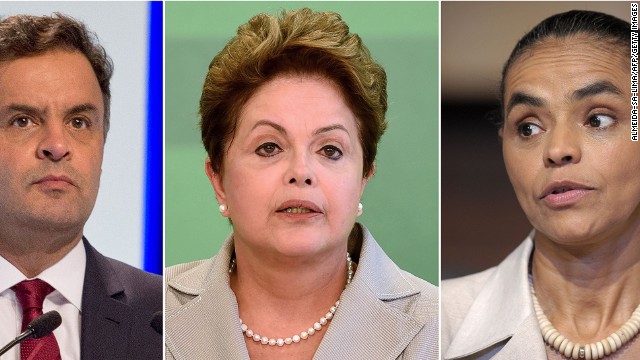By Josep Colomer.

The answer is: the Brazilian Democratic Movement Party (Partido do Movimento Democrático Brasileiro, PMDB). Many people may not have heard much of this party recently because the party didn’t run a presidential candidate on its own. But, as always, it’s the median voter’s and the median seat party and the king-maker (that is, the president-maker). The opposite of the parliamentary kings, the PMDB doesn’t reign but it rules.
The crucial role of the PMDB is very clear in the parliamentary election, which is held by proportional representation. The PMDB obtained only 11 % of votes (66 seats), but, on its left, the direct supporters of the incumbent president Dilma Rousseff plus the far left received 47% of votes (238 seats), while the center and right parties received in total 42% of votes (209 seats), thus leaving, as usual, the PMDB in the pivotal position capable of making a majority on any of the two sides.
The PMDB is the continuator of the official opposition during the last years of the military dictatorship in the 1970s. In the first open presidential election in 1985, which was held by means of an electoral college, the PMDB candidate, Tancredo Neves, was chosen president, and at his early death was replaced by his running mate Jose Sarney from the same party. However, the PMDB has not run presidential candidates on its own in most direct presidential elections since the 1990s.
As typical of some anti-dictatorial parties, the PMDB is a catch-all party, which groups together a large range of politicians, coordinates diverse regional groups, and obtains the support of not very ideological voters. Today it is the Brazilian party with the largest number of affiliates.
It has elected higher numbers of governors, senators and deputies at state level than any of the other major parties in the last election. The PMDB has participated in most presidential cabinets with presidents of different parties. The current leader of the PMDB, Michel Temer, was a long-term chairman of the Chamber of Deputies and has most recently been vice-president of the republic with president Rousseff, with whom he ran for reelection a few days ago.
The crucial role of the PMDB in the recent presidential election may have been disguised. By looking at the three major candidates, Rousseff of the Workers’ Party (PT) on the left, Marina Silva of the Socialist Party (PSB) on the center-left, and Aécio Neves of the Social Democracy Party (PSDB) on the center-right, it may seem that Silva was the median voter’s candidate at the first round.
Actually some PMDB voters may have voted for Silva, and even a few for Neves (especially in the state of Rio Grande do Sul), at the first round. The vacillations of PMDB voters may be a major explanation for the survey polls that during a few weeks predicted that Silva would pass to the second round.
If this had happened, most likely Marina Silva would have been elected president of Brazil. But Neves’ stronger campaign placed him on second place. At the second round, as Silva had been eliminated, most PMDB voters chose Rousseff and their party’s vice-presidential candidate and made them the winners.
As usual, president Rousseff will need the support of a multiparty majority in Congress and, as usual too, the PMDB will be pivotal for attaining such a goal.


